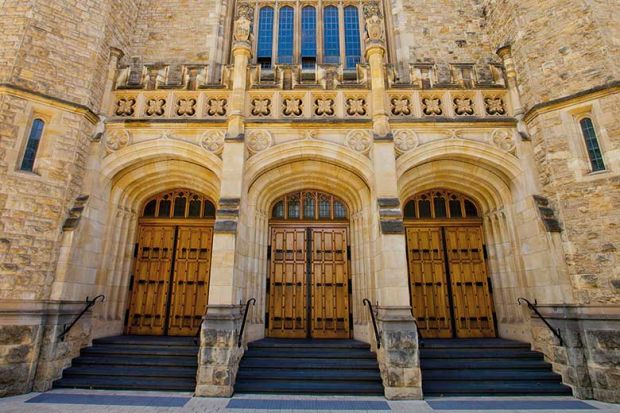The governing bodies of two South Australian universities formed vastly different judgements about the merits of a proposed merger, indicating that the betrothal was not ended by mutual choice.
Internal emails reveal that the council of the 144 year-old University of Adelaide wanted to join forces with the neighbouring University of South Australia. But the younger institution decided that the price would be too high.
In an email to staff, South Australia vice-chancellor David Lloyd says a hard-headed analysis “through a cost-benefit lens” had concluded that the proposal did not stack up.
“Weighed against the strategic risks, our council concluded that there is not a compelling case to support a merger,” the message says. “The evidence reviewed by council clearly supports the determination.”
The two universities abruptly called off merger negotiations originally scheduled to continue at least until December – a step that Adelaide took reluctantly, according to a memo from chancellor Kevin Scarce.
“Each university council has formed different views and we have therefore been unable to reach agreement,” it says. “The University of Adelaide’s council remains confident that such a merger would be in the long-term best interests of the state.”
The two universities are remaining tight-lipped about the factors that scuttled the proposal. “We aren’t elaborating further on the discussions,” they said in a joint response to questions from Times Higher Education.
The institutions said “no single reason” had triggered the termination of the talks, and that observers could expect to see a potential merger back on the agenda “no time soon”.
Professor Lloyd’s message suggests that his council concluded that it would simply be too hard to combine two institutions with distinctly different cultures quickly enough to reap the benefits of larger scale.
The council considered external branding and ranking agency reports as well as an interim report from consultants Nous Group, and submissions collected during public consultations.
Gavin Moodie, a former institutional strategist at RMIT University, said that the merger would have proved expensive, both in time and money, and rapid implementation – within three to five years, as opposed to a decade or more – would have increased the initial costs.
Dr Moodie said that while an amalgamation would have produced savings, they would have taken time to emerge. “[They] could be achieved earlier if staff were made redundant, but the universities ruled out forced redundancies arising directly from the amalgamation,” he said.
Dr Moodie said the proposal may have faltered because the parties were unwilling to wait for the benefits to emerge. The universities may also have been reluctant to rule out redundancies as long and comprehensively as staff wanted.
Nick Warner, Adelaide branch president of the National Tertiary Education Union, told his members that “a multitude of questions and concerns, including over redundancies”, had made staff “wary” of the merger.
He said the union had been seeking a “key set of protections” in the event of a merger, along with a “clearly articulated vision” of the merger process and its objectives.
At the very least, the proposal’s demise has forestalled the forced redundancy of one of the universities’ two vice-chancellors. It has also prevented a reshuffling of university representative bodies which risked leaving the Australian Technology Network with just three members, after Queensland University of Technology left the group last month.
Register to continue
Why register?
- Registration is free and only takes a moment
- Once registered, you can read 3 articles a month
- Sign up for our newsletter
Subscribe
Or subscribe for unlimited access to:
- Unlimited access to news, views, insights & reviews
- Digital editions
- Digital access to THE’s university and college rankings analysis
Already registered or a current subscriber? Login











